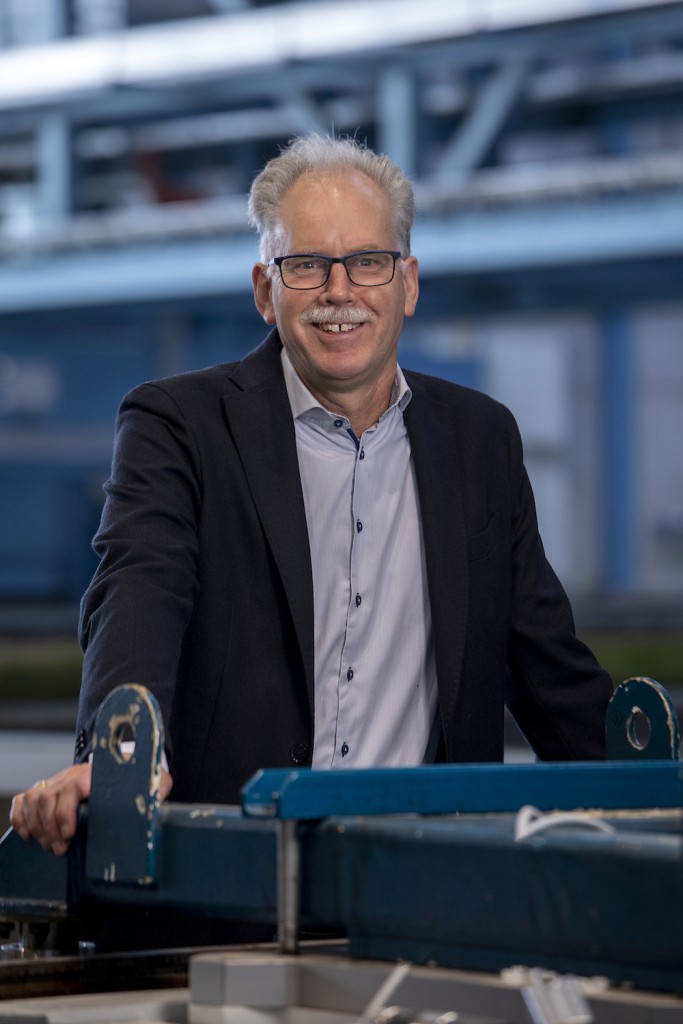 ‘The ever-growing size of vessels is one of the most important developments’
‘The ever-growing size of vessels is one of the most important developments’
The Infrastructure market covers a wide and diverse range in many ways: from projects studying the capacity of inland waterways and the design and operation of ports and terminals, to offshore infrastructure like the futuristic hyperloop described in the previous edition of Report magazine.
Our clients are ‘owners’ of the infrastructure such as port authorities, local and regional governments or private terminal operators, but also consulting engineers that need specialist input in the design team, contractors who want to verify an alternative design or proposed construction methods, and tug companies and dredging contractors amongst others.
Multi-party projects
Infrastructure projects are often multi-party projects, emphasises Johan Dekker, Project Manager Maritime Operations and responsible for the Infrastructure market. “Port authorities and governments are on one side developers of new infrastructures, but on the other hand they have a role in permitting the development of new facilities in their region, setting the limits for access for ships or preparing guidelines for design. As a permitting authority, they can be an important stakeholder for our client. And professional users such as pilots, captains, tug masters or inland skippers are often involved as well.”
Johan comments: “We support our clients in all stages of a project: during concept development, detailed engineering, construction, design and operations.” Personally, he likes the port projects in which MARIN advises clients on the full range of the nautical design. “This can include simulating the manoeuvres to/ from the berth, evaluating the under keel clearance, calculating the dynamic behaviour of the moored ship and analysing the nautical risks so we can advise on the limits for the operation and the options to mitigate risks.” He also enjoys projects in which we are involved in the early design stage and can help the client in optimising the design or construction methodology. A few years ago, the number of breasting dolphins for an FSU terminal could be reduced, which represented important cost savings, he points out. “Dredgers and other construction vessels are also interesting. The operational profile of these kinds of vessels is very different compared to other vessels which makes optimising the hydrodynamic design sometimes challenging.”
Ever-growing vessels
One of the most important developments in the infrastructure market that MARIN helps its clients to address is the ever-growing size of vessels. “In container shipping especially, the size of the ships has increased considerably over the last decade. The ultra large container carriers are mainly used on the routes between East Asia and Europe, but the effect is that the slightly smaller vessels are transferred to other routes. This requires port infrastructure that is adequate to receive these larger vessels. Sometimes it is possible to receive the larger vessels within the existing infrastructure, but this may only be feasible in milder conditions.”
Though an official report is not yet available, it seems that the recent incident in the Suez Canal is an interesting example of this problem of increasing ship sizes, Johan says. “I understand it happened in strong winds and though the Canal has been widened several times, it may not be adequate for the largest vessels in all conditions anymore.”
Other interesting developments are autonomous ships and alternative fuels. The first is still in its early stages and it is unclear what impact this may have on port operations, but some tests have already been carried out involving controlling a tug from a desk in an office, he explains. The latter may require other bunkering infrastructure. “LNG is the forerunner in this respect: LNG bunkering vessels are being developed which require new berths for loading. There are inspiring examples of ships for wind-assisted propulsion, but when entering ports, such vessels may require more space because of the larger wind forces.”
Looking over the horizon
When considering what the main challenges are for the infrastructure sector, Johan laughs, adding that one of the challenges is the horizon! “When you build new infrastructure, it will be there for decades. This means that it still needs to function properly 25 – 50 years after it has been built. Therefore in the design stage you sometimes need to look over the horizon and make an educated guess of what ships may be using the port or waterway for decades later on.”
For the design of the Maasvlakte 2 port extension project in Rotterdam, MARIN did the first simulations in 2000 with container vessels of 387×57 m, with the largest vessels at that time about 346×43 m. “However, when the first container terminals were opened, the largest vessels were already around 400×60 m. The difference is not that large, but if the increase in size continues in the next 30 years, new port basins may be required unless these larger vessels are handled at fixed or floating infrastructure in the coastal area.”
Cooperation within the sector is also important for developing new technology, he says. In the Infrastructure market, examples include the ROPES and Windlass JIPs (www.marin.nl/jips). In the ROPES JIP, the forces and motions of moored ships were measured when ships were passing to improve and validate numerical tools that are used for the design of moorings. Windlass aims to better understand the 3D wind field in ports and waterways and to develop a practical tool to predict the wind loads on ships, taking into account the effects of buildings, cranes, container stacks and other obstacles. MARIN cooperates with port authorities, consulting engineers and other research institutes to improve the tools that are used in the design of port infrastructure in these JIPs.
“In the design stage you sometimes need to look over the horizon and make an educated guess of what ships may be using the port or waterway for decades later on.”

